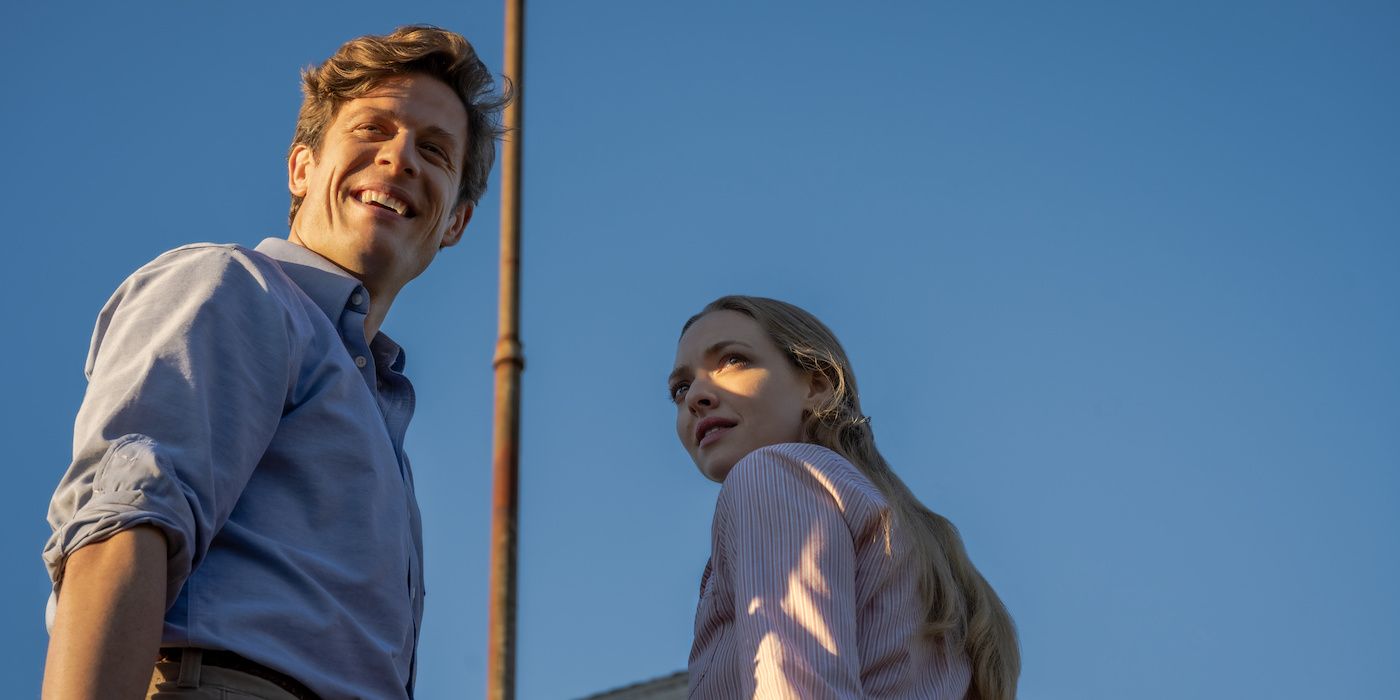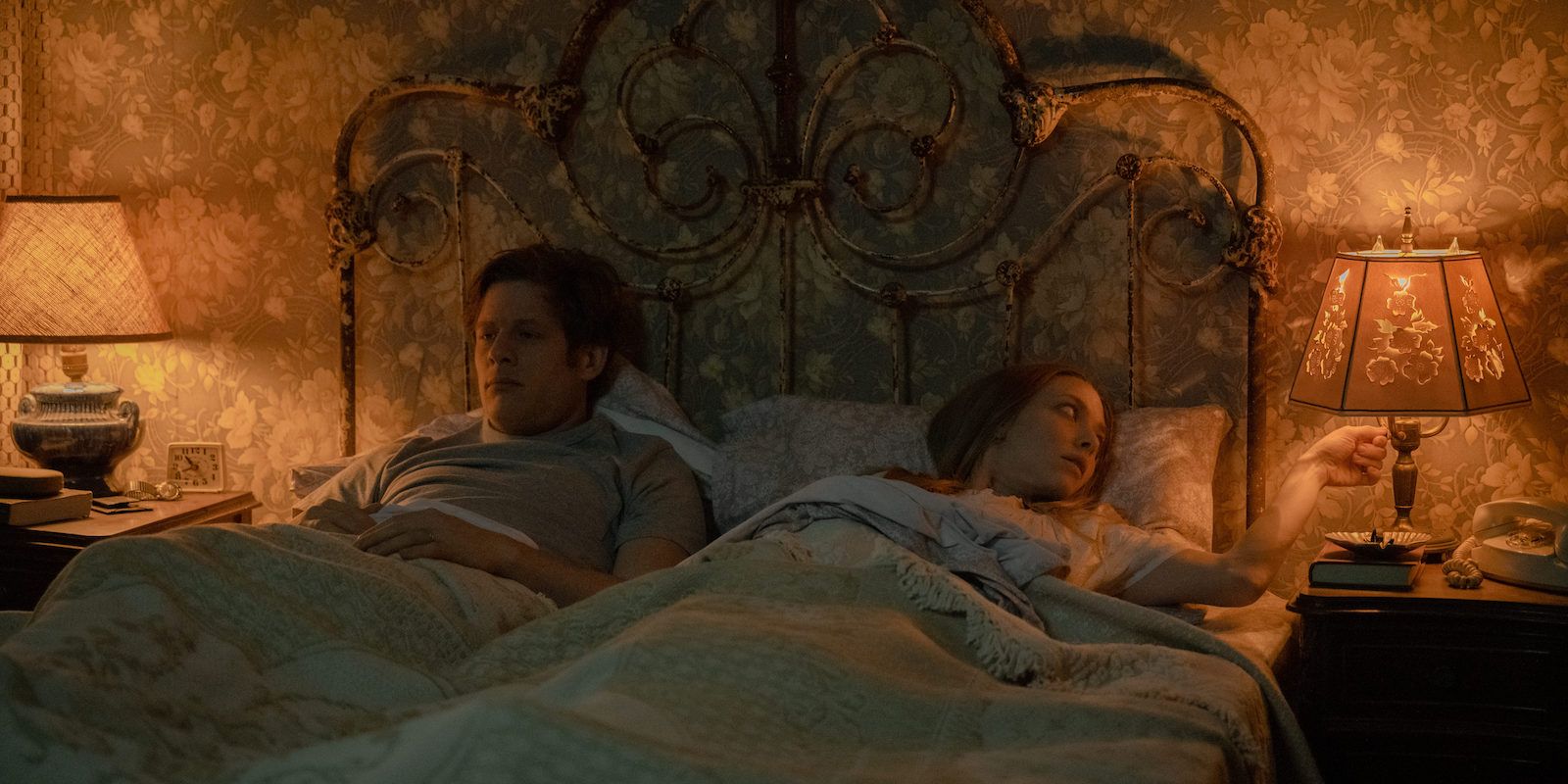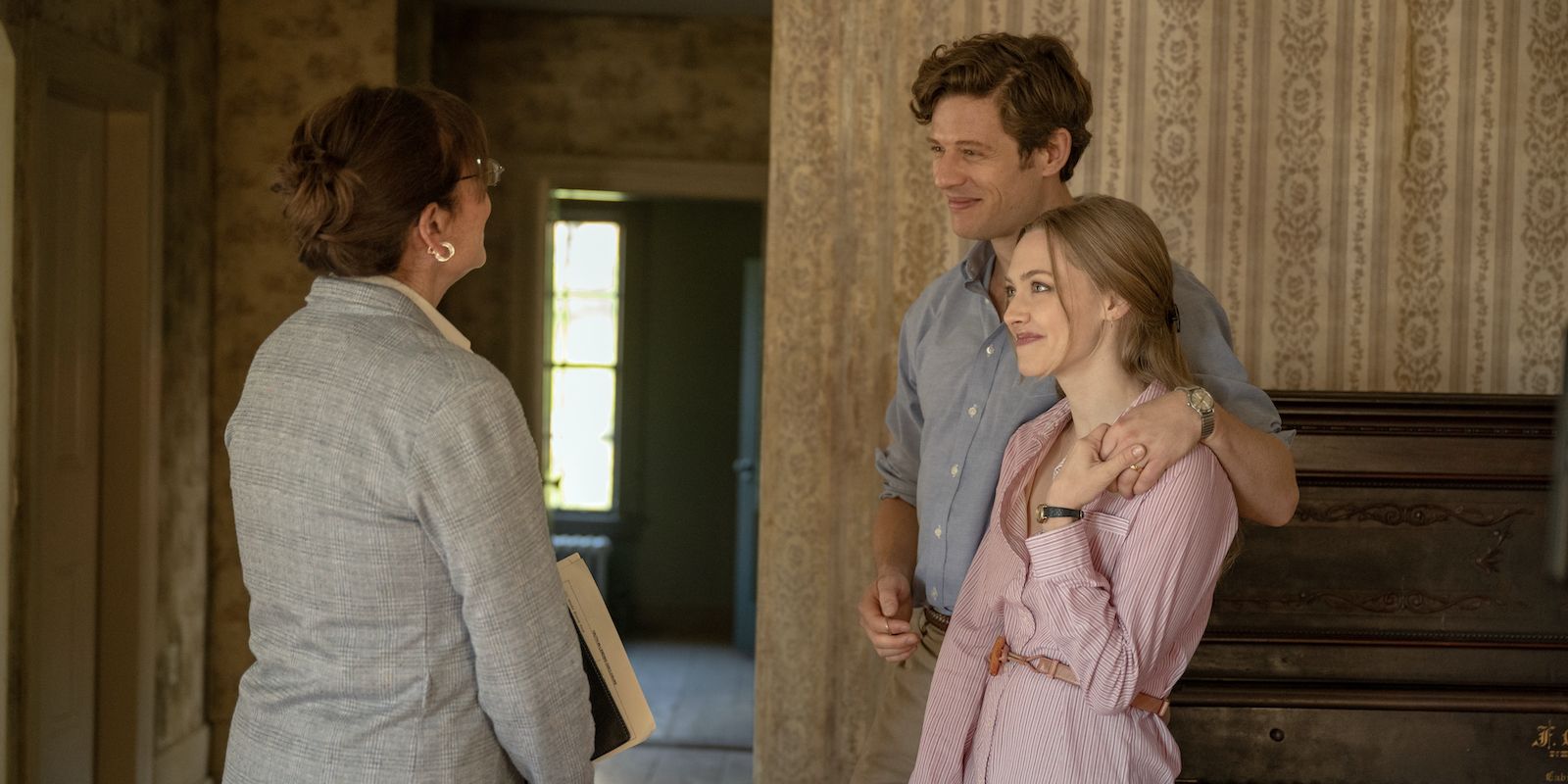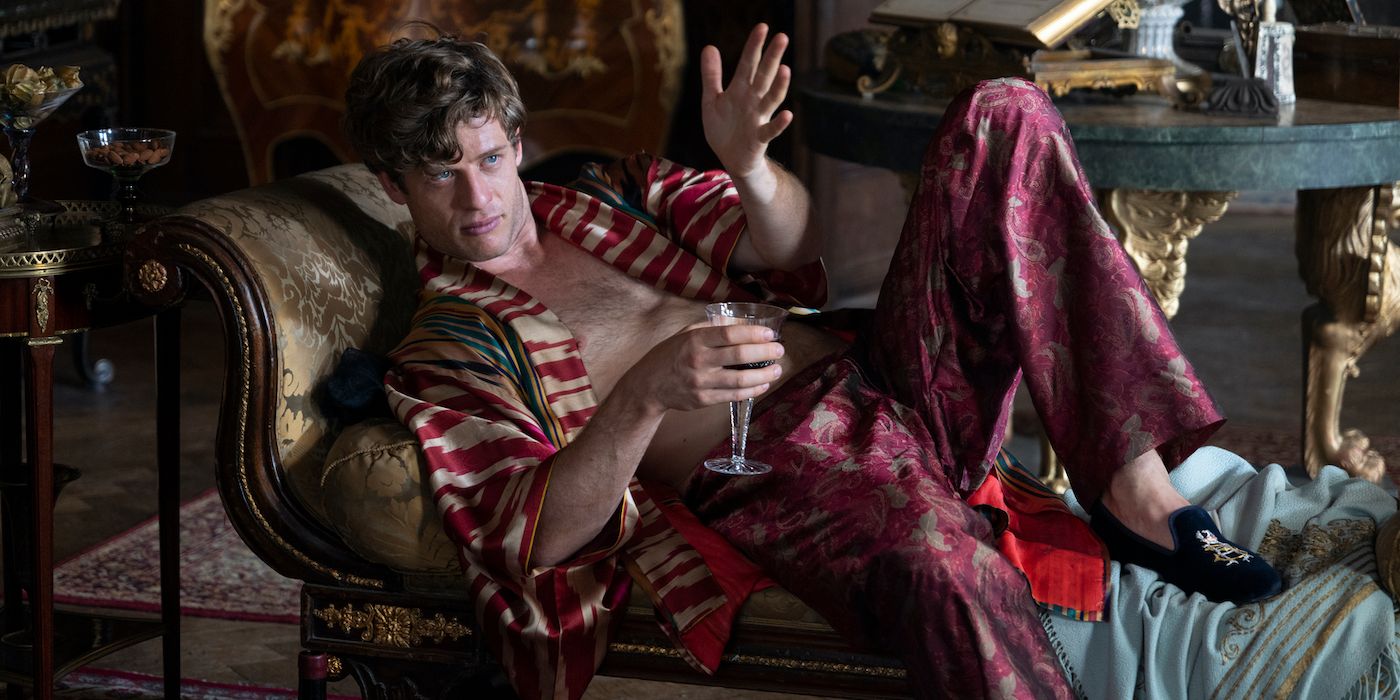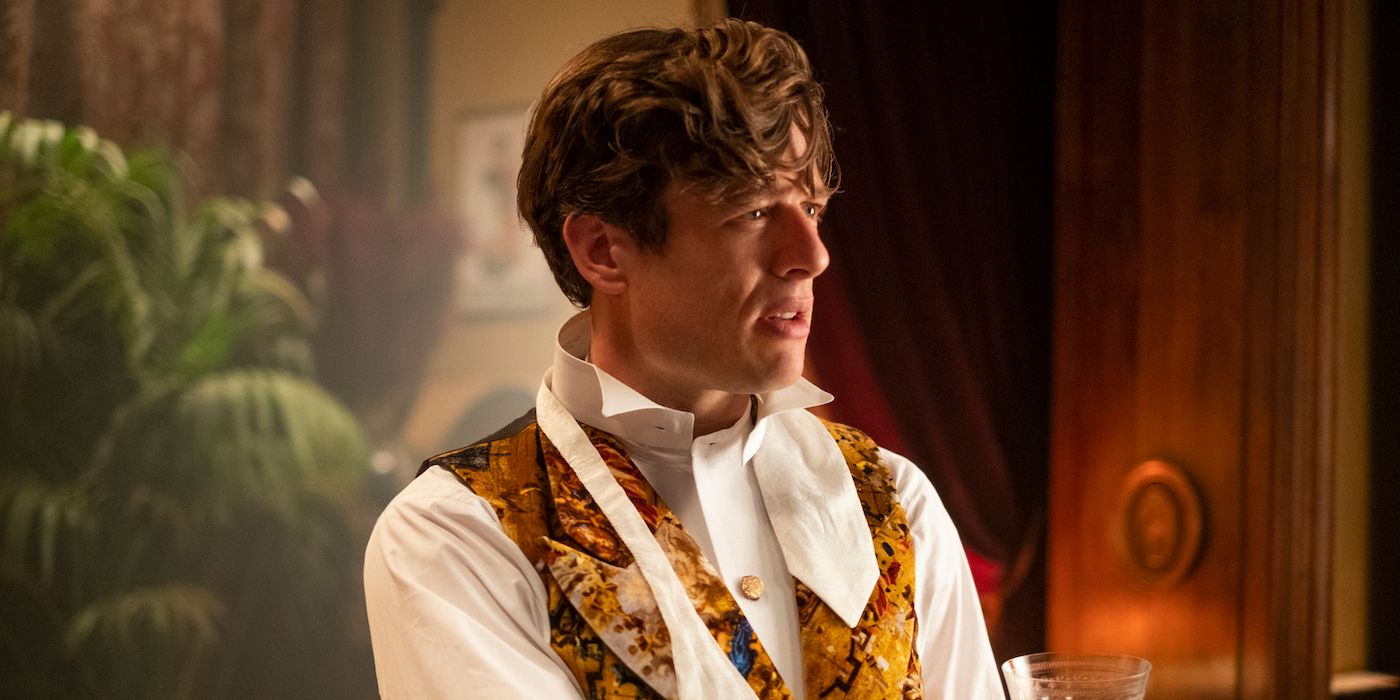WARNING: The following contains spoilers for Things Heard & Seen, which is currently available to stream on Netflix.
James Norton has been well-known in Britain for quite some time. Now, due to a pair of stand-out roles in high-profile projects, those of us in America can finally catch up. Norton can be seen in the recently released Netflix thriller Things Heard & Seen as George Claire, an art history professor who must contend with both a troubled marriage to Amanda Seyfried's Catherine and a haunted house, ultimately leading him down a terrible path. He's also featured in HBO's The Nevers as the charming Hugo Swann, a pansexual elite who runs a bordello.
Norton spoke to CBR about his work as the complex, secretive George Claire in Things Heard & Seen, being part of the bizarre world of The Nevers and the unique challenges presented by both projects.
CBR: How would you describe George Claire?
James Norton: He's a bit of an enigma, old George. I mean, what was interesting and challenging was to work out where the character George and his actions and agency ended and then how much the kind of echoes and the presence of entities in the house kind of took over. The man himself before that happens, I mean he's a lost soul. He's a sad, slightly tragic man who I think represents this old-fashioned misogyny and fear. The idea that his wife should be empowered and have a career of her own, it's totally alien to him. And he has this just extraordinary pressure on himself through his family and, at the time and the class he's from, to forge this career, which he's just clearly not capable of. And the mixture of all those things -- that sense of inadequacy and pressure and weakness and add a deep misogyny -- basically leads to this perfect storm where he goes crazy with self-loathing, to the point where he's willing to put the people that he supposedly loves in such jeopardy. So all in all a very tragic, tragic man, I think.
George has quite a trajectory from where he starts to where he ends. How did you go about developing him?
A lot of what I worked with was acquainting myself with the period, the area, I'd never been to that part of upstate New York. The Hudson River School of painters was quite new to me and that was really pleasurable parts of the research to acquaint myself with those incredible painters and become a kind of mini college art historian in a few weeks. But as far as the character is concerned, you can't tap into the evil of a character. It's all about where that misguidance and that hate and ill feeling comes from. And I think for me, a lot of it, as I said, was from the societal constraints and pressures which he's under.
And also I guess part of his family, we meet his mum and dad and they've got some fairly flagrantly racist, prejudiced views on homosexuality, and I'm sure that's not the end of the kind of discriminatory ways that he's grown up in. So I feel like he's partly a product of his upbringing and the period he's living in. And as I said before, it was tapping into sort of the limitation which he felt, which he obviously grappled with, and then particularly in the face of Catherine who's such a force and such a positive force and such a competent and brilliant mother and brilliant artist. And I think the more she is able to thrive, the more he feels his inadequacy. So, it was just tapping into all of those things.
And what was interesting was that it was very timely post-#MeToo. Unfortunately, these types of individuals obviously still exist, and he is the classic symptom of that pre-#MeToo sense of a man is entitled to the career and the woman must live in relation to that man and must make the sacrifices which are required in order to get that man his career. And it was important and exciting to do a movie which, post-#MeToo, explored in great detail and nuance that very kind of assumed and I guess endemic level of misogyny which the world lived with for so long, particularly in those parts of the world.
What was it like working with Amanda Seyfried to build that onscreen relationship?
We had a really, really good time. We did a lot of press and a lot of it was spent describing how much fun we had, and I think a lot of people were expecting us to have had a really grueling time because obviously the content of the material. And sometimes that is the case. Like it's no doubt that sometimes you really feel the material and the weight of it. But I think often with that very heavy, heavy material, you often kind of offset it with just a lot of fun. And Amanda is totally joyous. We just got on really well. We click. I think we probably got on a little too well, the directors sometimes had to basically chastise us like two primary school children.
And for me it was an adventure because I was up in Kingston, upstate New York. [I've] never been there before. It's a beautiful part of the world. We were there during the leaf peeping period, when the people around the world come and they look at all the leaves turning. So that was really special. We'd go hiking. She lives up there. So it was just a really fun, really special few months. I have a lot of love for her, and I hope that we'll get to work together on something a little bit more jolly. [Laughs]
The film brings up a pretty unique perspective on the spiritual world based on the work of mystic Emanuel Swedenborg, but your character makes it clear he's not a believer. How did that impact your performance?
It's interesting because obviously he's a cynic and yet he's probably the most -- other than Catherine -- he's the most affected by that world, that Swedenborg world. So it was an interesting kind of instant conflict to play: the cynic versus the tormented. Personally, I'm not a huge believer in that kind of thinking, so it was easier for me to sort of tap into the cynical rather than the believer. And then I think Amanda actually is a little bit more the opposite. That's quite nice that we were able to represent respective views on the matter. It was fun. […]
To me, the real draw of the whole piece was the relationship between Catherine and George and the way that was written and the way [co-writers and co-directors Robert Pulcini] and Sherry [Springer Berman] intimated that. On the page, it was so strong. And that's for me, the most exciting stuff to film.
It's funny, if you ever want to break the myth of horror or even make it less scary, come hang out on a horror film set, because the bits which are so deconstructed, and as you'd expect, require all the special effects and all the kind of toys and the noise, they're the bits where you're meant to be the most scared, but they're the fun theme park bits to film. [So] I didn't get particularly scared. Although having said that, the house we were filming in was weird. And as a non-believer in ghosts, I've got to say it, I would not have slept there alone at night [...]. It was a weird place. I think we were projecting a lot onto the house.
What made it weird?
Well it was this farmhouse near the Connecticut border. I think it hadn't been touched for years, but it kind of felt like it really didn't want to be touched. It was obviously in need of a massive renovation and was about to undergo some huge revamp and it had these amazing old bones. I mean, that's from someone who's lived in the UK his whole life and [is surrounded by castles that are centuries old], and this place wasn't that old but it did feel very creaky and very atmospheric and had an old berry farm at the back and is in the middle of nowhere. And the weather as well is so extreme in that part of the world. We had a crazy snowstorm come in and that was quite dramatic.
I loved it. As I say, the part of this movie that I really enjoyed the most was [discovering] the work of the Hudson River School, because you study these paintings, they're so beautiful, and then you realize that you're actually in the location of where they actually painted. You can go and visit the actual viewpoints of like [George] Inness' paintings. We were really there at the most beautiful time of year, so that was very special. But it did make the house feel quite eerie and remote.
You're also currently appearing on the HBO series The Nevers. What has it been like to be part of that show?
I mean, very different from Things Heard & Seen, as you can imagine. A very different role, very different atmosphere. It's been an amazing experience. It's been frustrating because of this nature of how we've had to shoot and the time it's taken because it's obviously been a really unsettled shoot, what with the COVID of it all. We had first one delay after another, and now we're only six episodes in and we should have really finished our 12 episodes. But the actual time spent [to make it] has been really fun. It's the biggest, starriest show as far as money and budget and toys, and I'd never done anything for HBO before, and that's always quite fun and eye-opening. Wonderful cast.
[Lead actor] Laura Donnelly's obviously our general and is amazing. I love being part of such a bizarre, bonkers show that [is] this kind of genre-bending, female-driven Victorian steam-punk. At every turn it takes you by surprise, which I love. So it's been fun. And my role obviously is just nuts and just a joy. I mean, it's getting to have the most amount of fun and play and be ridiculous. And not have too much pressure as well, you know. I'm not in Laura's shoes, so I can have a lot of fun, which I really am having, so it's great.
Your characters from Things Heard & Seen and The Nevers are very different, but there are some parallels. They're both very charming, and they're both a little bit morally questionable.
This is true, this is true. They're not actually that dissimilar, are they? I hope I'm not being typecasted [as] these slightly dubious, freaky individuals. It's not a reflection on me I promise.
What were the biggest challenges for each role?
There were I guess certain practical challenges with Things Heard & Seen with the accent and me not being American, that was something which I needed to spend time on. The role of The Nevers, I mean, the challenge of that is I guess, the speed of the writing and the kind of the dance, the rhythm which it requires is so fast. And also my character is quite funny, you know, so I'd never really done much in that kind of comedy space and I really enjoyed it. And I've always wanted to do more. I did lots of comedy at university and it's really nice to play the role that has these fantastic one-liners. With that also comes the challenge where you know that because there's a joke there that you really need to nail it in order to do it justice and that's a kind of added pressure. But with great directors, great writing I felt like the character was delivered in the way I wanted, which was great. But yeah, different challenges, but it also always varies. There's a crossover a little bit with that kind of slightly dubious, charming, but morally questionable man, but also they're very different. And for me, it's all about keeping it varied and fresh.
What's coming up next for you?
Well, The Nevers is going back into production top of June, I think, which is going to be great to see where those storylines go. And actually what's really exciting for me right now is that we're currently in pre-production on a movie [Chasing Agent Freegard] which I'm producing. It's the first time I've produced, and I have a production company called Rabbit Track, which we set up about a year and a half ago and this is our first film which we have in production. And it's really exciting. It's a kind of psychological thriller about a true story, a con man in the nineties and aughties who managed to brainwash a collection of people and extort all their money and ruin their lives. It's all about control. I mean, a really weird master manipulator. Again, a charming man with dubious moral compass, which I didn't realize was a theme.
There is another film coming out in July, which I'm very proud of called Nowhere Special. That's completely the other side of the coin. He's not a charmer, he's definitely got an amazing moral compass and it's a film by Umberto Pasolini which I shot just before Things Heard & Seen and I am very proud of. So bits and pieces coming out, bits and pieces to film.
Starring Amanda Seyfried, James Norton, Rhea Seehorn, Natalia Dyer, Alex Neustaedter, Jack Gore, James Urbaniak, Ana Sophia Heger and F. Murray Abraham, Things Heard & Seen is now available on Netflix.
Created by Joss Whedon, The Nevers stars Laura Donnelly, Olivia Williams, James Norton, Tom Riley, Ann Skelly, Ben Chaplin, Pip Torrens, Zackary Momoh, Amy Manson, Nick Frost, Rochelle Neil, Eleanor Tomlinson and Denis O’Hare. New episodes air Sundays at 9 p.m. ET/PT on HBO.

